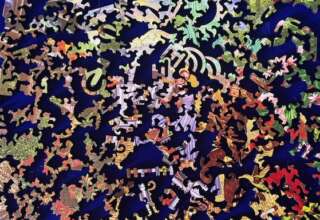
The sectors were being crossed by Hatfill in 2001—and once again in 2020. However, this second crossing of the boundaries occurred not through real or wrongly-accused action but through a much deadlier venue—he was now a highly-influential “expert” that the White House was relying on in the formulation of policy regarding COVID. Furthermore, Hatfill was now being asked to offer advice about and was beginning to offer public statements regarding a totally different matter that was housed in a totally different sector: the “falsification” of presidential election results. After the election, Hatfill wrote that he “shifted over to the election fraud investigation in November” as Trump continued to argue that the election was stolen from him in 2020, a claim that fueled the January 6, 2021 Capitol riot by Trump supporters. He was giving “expert” advice about the election to those in the White House fighting against the results and offering his expertise in public statements. The Hatfill Fiasco was in full operation and dragons were to be found in abundance.
Hubris and the Imposter Syndrome
A further review of his emails, revealed that Hatfill routinely bragged about his role and his proximity to high-powered government officials: “They fly me around sometimes on private jets to sort s out. Seeing the good and the bad and what needs to be fixed.” His growing hubris is revealed in a September 3, 2020 email: “I actually lost it and told Fauci [the head of the National Institute of Allergy and Infectious Diseases who is now Biden’s chief medical advisor] he was full of crap a couple weeks ago,.”
How did Hatfill gains credibility regarding matters of health? What made him an expert on many matters that were far beyond the areas in which he was educated and where he had gained experience? The rest of this essay concerns answers to these troubling questions. We need to establish a litany of errant expertise and can first enter the “Hatfill Fiasco”, I think his “hat” is filled with Hubris. He is a perfect example of how experts (especially when enabled with prestige and power) can go way beyond the boundaries of their expertise, and then damage trust. We have not heard the end of this story.
At one level, we can identify the role Hatfill was playing as that of the imposter. As Ket de Vries (2003) has noted in his book, Leaders, Fools and Imposters, there is a long, troubling history of imposters playing a major role in the formulation of public and organizational policy. It is not only that the imposter must be quite skillful in providing his (often male) advice—recipients of his advice must continue to believe in him and his wisdom even if he is proven to be inaccurate or (worse yet) deceptive.
These are the collusion-related dynamics operating in something called the “imposter syndrome.” This syndrome is operating then it is critical that the recipients of “expert” advice collude with the “expert” (imposter) so that they don’t have to admit that they were fooled, stupid, gullible, etc. With the continuing acceptance of the imposter’s advice and guidance comes an increased hubris (and often increasingly misguided advice) on the part of the imposter. A perfect storm exists. Hatfill’s hat is filled with hubris.









